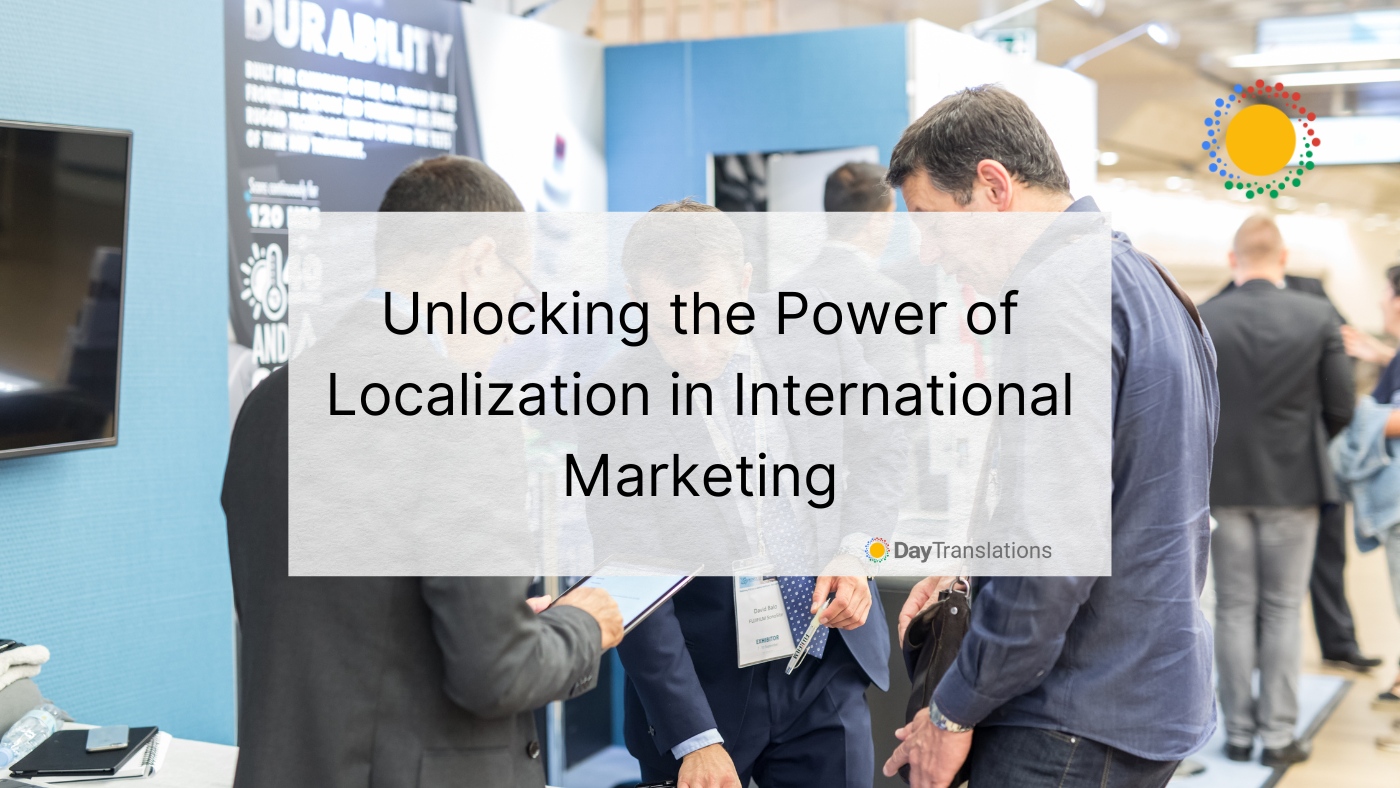In our rapidly evolving digital landscape, businesses now have unprecedented opportunities to expand their target markets and attract new clients on an international scale. However, contrary to popular belief, there are numerous regions worldwide where purchasing power is rising, yet English is not the primary or preferred language. When venturing into these markets, it’s crucial to recognize that more than simply establishing a presence and shipping products overseas is required. The key to success lies in speaking your new audience’s language, literally and metaphorically, by applying localization in international marketing.
The days when communicating with customers in your company’s default language sufficed are long gone. In fact, it has become essential to connect with your customers in their native language. This truth is underscored by a 2014 study conducted by the Common Sense Advisory Group, which revealed that 75% of consumers are more likely to make a purchase when information about the product is presented in their native language.
By gaining an understanding of your consumers, their unique habits, culture, and language, you can create tailored marketing materials that resonate on a deeper level with your audience. Let’s explore some dos and don’ts for global businesses aiming to translate their marketing materials for international audiences, ensuring they are captivating, engaging, and culturally relevant.
The Basics of Deploying Localization in International Marketing
Do: Work With a Reputable Language Services Provider
While you or your employees may be fluent in the language you wish to translate your materials into, it is often best to leave this task to professionals for a marketing campaign. Translating materials for a foreign market requires more than just bilingual skills. Professional linguists possess a comprehensive understanding of the target market, including its cultural sensitivities, current events, and nuances that can enhance the relevance and engagement of your marketing materials.
Do: Understand the Process of Transcreation
Literal, word-for-word translations are suitable for short, informal conversations, but they often need to evoke the desired impact. This is where transcreation comes into play within marketing localization—an approach that combines translation and localization while infusing an extra element of creativity. Transcreation takes your translation to the next level, ensuring that your message carries the same weight and meaning regardless of the language in which it is presented.
Do: Focus on Your Style Guide for Your Marketing Campaign
Your brand and its marketing campaigns possess a unique “voice” that must be translated effectively. To maintain consistency in your brand’s message across different languages in the marketing localization process, create style and editorial guidelines for your language services provider to follow. This includes reference materials like glossaries and previously translated content, which can assist the translator in capturing the desired tone.
Don’t: Rely on Machine Translation
While machine translation (MT) tools like Google Translate can be useful for short phrases, they are unsuitable for translating localized marketing messages. Professional and experienced human translators are essential for delivering high-quality results, regardless of the project’s scale. Machine translation often produces unnatural, inaccurate, and error-prone translations that need essential contextual understanding. To ensure an authentic native brand experience, human translators are indispensable as they can localize content to reflect cultural nuances. Remember, anything meant to be consumed by humans should be translated by humans.
Don’t: Overlook Regional Dialects in Marketing Localization
Translation involves more than a straightforward conversion from English to a foreign language. Consider the abundance of regional dialects and colloquialisms globally when taking your brand message. Even English-to-English content may require adjustments to resonate with foreign audiences. For instance, American brands targeting audiences in countries like Australia and the UK must use local market terms to provide their audiences with the right context for exploring their products. In regions like Spain, with its four distinct dialects, a localized marketing strategy may require modifications to align with regional sales patterns.
Don’t: Neglect Cultural Context in Your Global Marketing Strategy
When translating your marketing content, it’s important to remember that you are addressing an entirely new culture. Even with an accurate translation, your audience may still miss the essence of your campaign if you fail to incorporate cultural aspects into your messaging. It’s not just about saying the right words; it’s about understanding the cultural nuances and sensitivities that shape your audience’s perceptions and behaviors.
To ensure a successful localization process of your global marketing efforts, consider the cultural context of your target market. Take the time to research and understand their values, traditions, customs, and social norms. Tailor your messaging to align with their cultural preferences and sensitivities while still staying true to your brand identity. This may involve adjusting visuals, adapting slogans, or even reimagining the overall concept of your campaign to resonate more effectively with the local audience.
Remember, what might be acceptable and appealing in one culture could be entirely inappropriate or misunderstood in foreign markets. By considering cultural context in your global marketing campaign, you demonstrate respect for your target audience and build trust, ultimately increasing the likelihood of connecting with them on a deeper level.
Need Help with Your Global Marketing Campaigns?
At Day Translations, we specialize in helping brands establish a strong presence on the global stage. With our team of experienced and professional linguists, we ensure that every aspect of your marketing campaign is localized to maximize engagement with your target audience, regardless of the country you’re targeting.
Our services go beyond translation alone. We offer comprehensive global marketing localization and transcreation services, leveraging our deep understanding of language, culture, and international marketing campaigns to deliver impactful results. Whether you need assistance with translating marketing materials, adapting content for specific regions, or creating culturally relevant campaigns from scratch, our team is here to support you.














Sorry, the comment form is closed at this time.